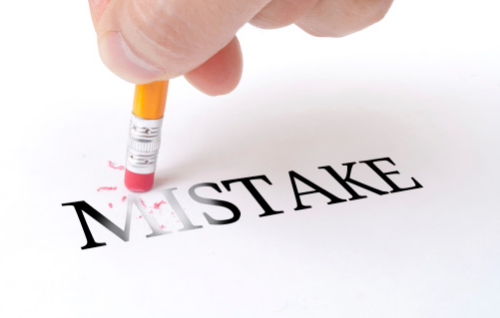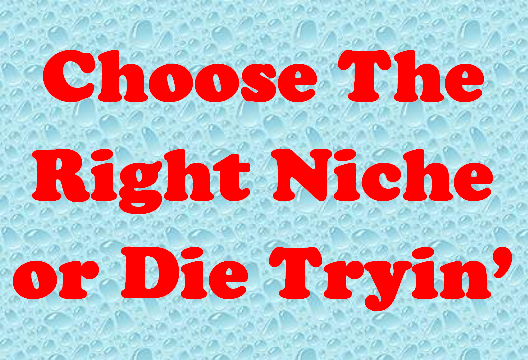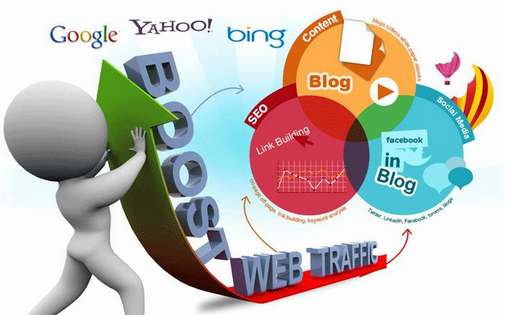Following is a glossary of terms that are frequently used in online business. (Pardon me, but I’ll assume that you’re a complete beginner who has no idea what any of these terms mean.)
1. Search engine
This is a program that is designed to help retrieve information from the internet. Google is the most commonly used search engine. Other popular search engines of great importance to internet entrepreneurs are Yahoo and Bing.
SERPs (search engine result pages) are the pages on which search results are displayed after a query.
2. Keyword
A keyword is a word or phrase that is used by online entrepreneurs in search engine optimization. Keywords are gathered based on how people enter their queries while searching for information on the web.
For example, assume you’re an affiliate marketer who sells products that cure acne.
If you discover, during a keyword research, that many people who want to buy treatments for acne are searching Google using the query “acne cure”, you will simply pick this query as your keyword and optimize your website/blog for it. This will make your website show up in Google’s results pages when people search Google with the query.
3. Keyword research
This is the process of finding out the queries that people use to search the web for relevant information.
Keyword research helps you know which keywords to optimize your website/blog for. It also gives you hints on the type of information that your target audience are looking for.
4. Long tail keyword
A long tail keyword (or a long tail) is simply a keyword phrase that comprises four words and more. Though they attract less traffic, long tails are very important because they are more specific, and they attract the specific visitors you’re targeting.
For example, if you’re an affiliate marketer for acne cure products, your blog would offer relevant information such as the definition, causes, and home remedies of acne — with your affiliate links subtly sprinkled within your content.
Even though you discuss the causes of acne on your blog, your aim is to attract visitors who would buy the product through your affiliate links, not those who would visit your blog just to learn the causes of acne and hit the close button.
In order to streamline your targeted visitors to only those who would buy the products you’re marketing, you’d have to target a keyword phrase like “buy acne cure online” or any other related keyword discovered to be commonly used by consumers.
Now get this: If you target a more generic keyword, such as “acne cure”, you’ll attract more visitors. But your visitors in this case would include those who want to learn how to cure acne with diet, home remedies for acne, herbs for curing acne, etc. Of course, these people are of no use to you (LOL!) You only need those who are ready to buy a product from an online store. If you target only such visitors, you’ll make more money because they’ll click on your affiliate links and buy the products you’re marketing (even though you’ll generate less traffic).
5. Content
Content is a collective term referring to the information — in any medium — that you offer on your website or blog. It could be in various formats, such as text, images, video, mp3, slideshow, etc.
Text remains the best format in which content is offered. This is because search engines analyze only the text on a page to figure out what the page is all about. Also, text is easily accessible for all users (some browsers may not display images properly and some visitors may not want to download mp3 and video files due to their usually large size).
Quality content refers to information that readers or visitors find very valuable because it answers their questions and solves their problems. You must offer this type of content all the time, to attract repeat visitors.
6. Search engine optimization
Search engine optimization (SEO) is the practice that involves implementing certain tactics aimed at improving the visibility of a website in SERPs. The higher a website ranks in SERPs, the more traffic it will attract. And this is the main reason why webmasters will continue to battle for the top ranks by implementing various SEO tactics.
On-page/on-site optimization refers to the SEO alterations that you make on the pages of your website or blog. You’re in control of these.
Off-page SEO refers to SEO alterations that you make outside of your website. Either you or visitors to your website make these alterations. So, you’re not in total control of your off-page SEO.
White-hat SEO techniques refer to SEO practices that are encouraged and are totally in accordance with the stipulations of the major search engines.
Black-hat SEO techniques refers to SEO practices that are prohibited by search engines. Webmasters adopt black-hat SEO techniques in order to achieve quick results. However, search engines penalize webmasters found guilty of this by either blacklisting and demoting their websites in SERPs or removing such websites completely.
7. Backlink
This is a link on one website redirecting to another website. Backlinks are very important because Google ranks websites based on the quantity and quality of links pointing to them.
A “nofollow” link is one that has been tagged with a special code, which instructs search engines to ignore the link and not count it as one of the links to consider when grading the site’s quality.
A “dofollow” link is one which has not been tagged with this code, and which is considered by search engines when ranking websites.
8. Linkbuilding
This is an off-page SEO practice, which involves proactively embedding backlinks on other websites. These backlinks redirect to your own website when clicked.
Ethical linkbuilding refers to link building practices that are in line with the guidelines laid down by the major search engines, while unethical link building involves adopting dubious means that are frowned upon by search engines.
9. Anchor text
This is the clickable text that indicates a link. In other words, it is the text you click on, which in fact is a link that redirects to another page.
10. Link-bait
A link-bait is any content or feature on a website that is interesting enough to catch people’s attention. Link-baits are designed specifically to gain attention or encourage others to link to a website.
Examples of link-baits include valuable content, quality videos that reveal problem-solving information, and infographics that reveal staggering statistics.
11. Page Rank
Page Rank (PR) is a measure of the quality of a web page. It is based on complex mathematical calculations that analyze the quality and quantity of backlinks to a page, among other factors. Page Rank is one of the factors that influence the ranking of a web page in SERPs.
A PR of N/A depicts that Google is yet to analyze a website. A PR of 0-1 depicts a new website that is of low quality. A PR of 2-4 depicts intermediate quality. A PR of 5 and above depicts high quality. Authority websites such as Wikipedia have PR of 6 to 10.
12. Alexa rank
Alexa rank is a measure of the traffic a website receives relative to other websites.
To be continued…
In the next post, I’ll be defining more terms that every newbie in online business must know and understand. So, stay glued to this blog, and you won’t miss anything.
If you’d like to get instant notifications when new posts are published on this blog, join the on-going free e-course and like the blog’s Facebook page (see right).
Your turn?
Are you still having problems understanding some of the terms explained in this post? Are there some terms you want me to explain in the continuation post? Kindly share your thoughts by leaving a comment.






You must be logged in to post a comment.